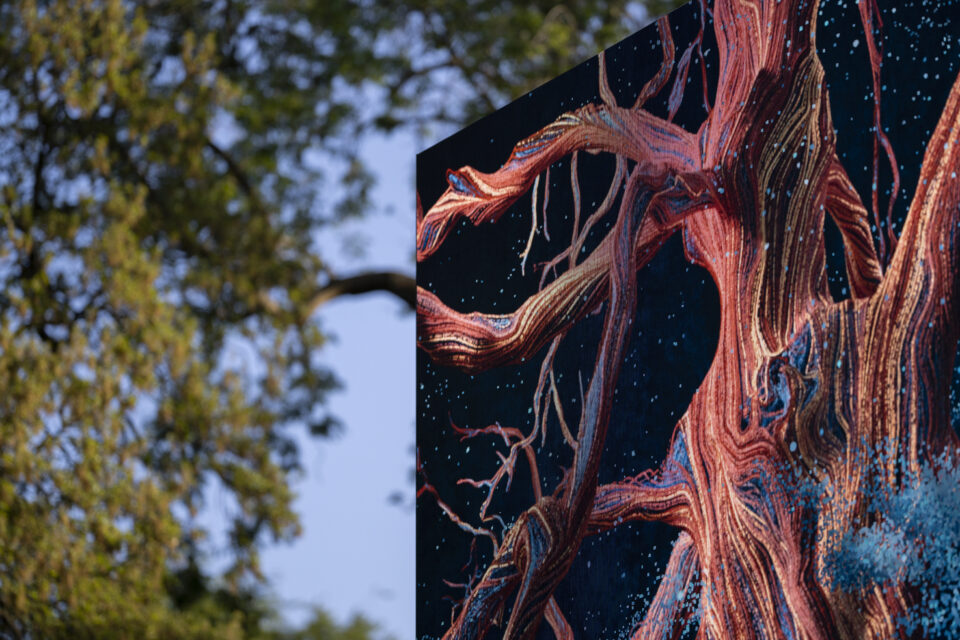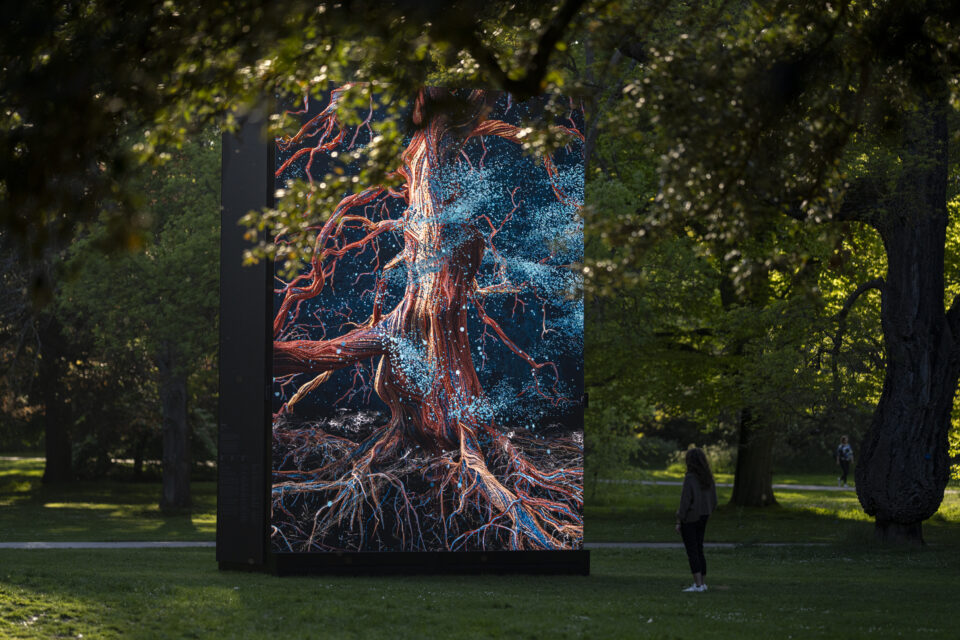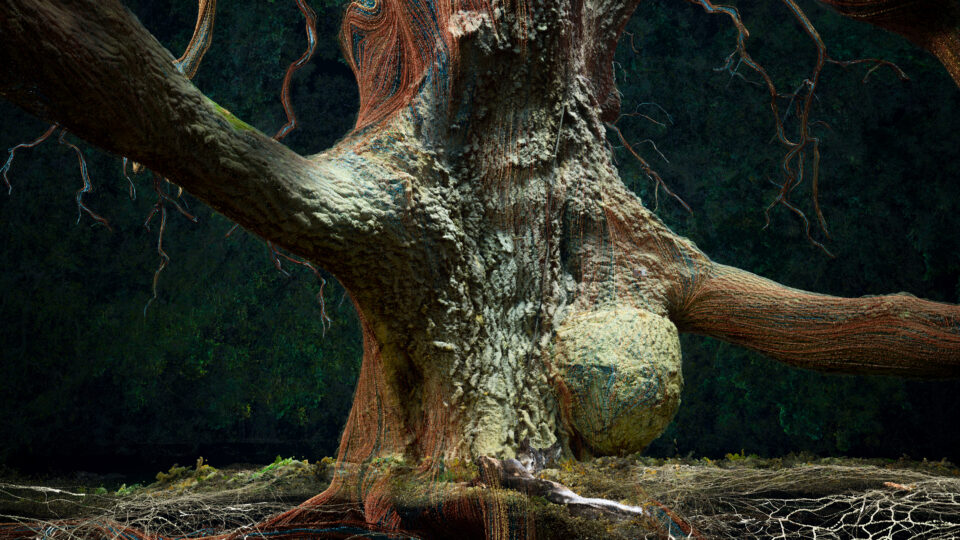There are more than 68,000 plant specimens currently held at the Royal Botanical Gardens, Kew. Some of these are extinct, whilst others represent threatened species from around the globe. It is also home to the largest wild seed bank in the world, kept secure as a safeguard against the disastrous effects of climate change and biodiversity loss. The 2.5 million visitors welcomed to the gardens each year step into an Eden of flora. Given the scale of the operation, it is even more impressive that their new exhibition takes its inspiration from one, solitary plant.

Nestled within the garden’s abundant foliage is an oak tree. It is one of the oldest at Kew, grown from a cutting of the very first Lucombe oak, which was discovered in 1762. Now, it is also the centrepiece of the institution’s first-ever outdoor digital art display. Created by renowned collective Marshmallow Laser Feast, the 6-metre-high LED installation fuses scientific research with poetic visuals. The video uses real-world data to unveil the interplay of oxygen and carbon dioxide within the majestic organism.

Visitors are whisked away on a sensory journey. They are invited to peer beneath bark and soil to reveal the usually unseen processes that sustain life, and witness the web of 2,300 interconnected species that rely on the oak for sustenance and survival. The artwork also includes a guided meditation that allows audiences to synchronise their breathing with the rhythms of the tree, paying tribute to the therapeutic qualities of spending time in nature. The cutting-edge technology employed is awe-inspiring, opening up new avenues of engagement and imagination.
Of The Oak is at Kew Gardens, London until 28 September: kew.org
Image credits:
1. Of the Oak, by Marshmallow Laser Feast.
2. Of the Oak, by Marshmallow Laser Feast. Image: Barney Steele.
3. Of the Oak, by Marshmallow Laser Feast. Image: Barney Steele.





